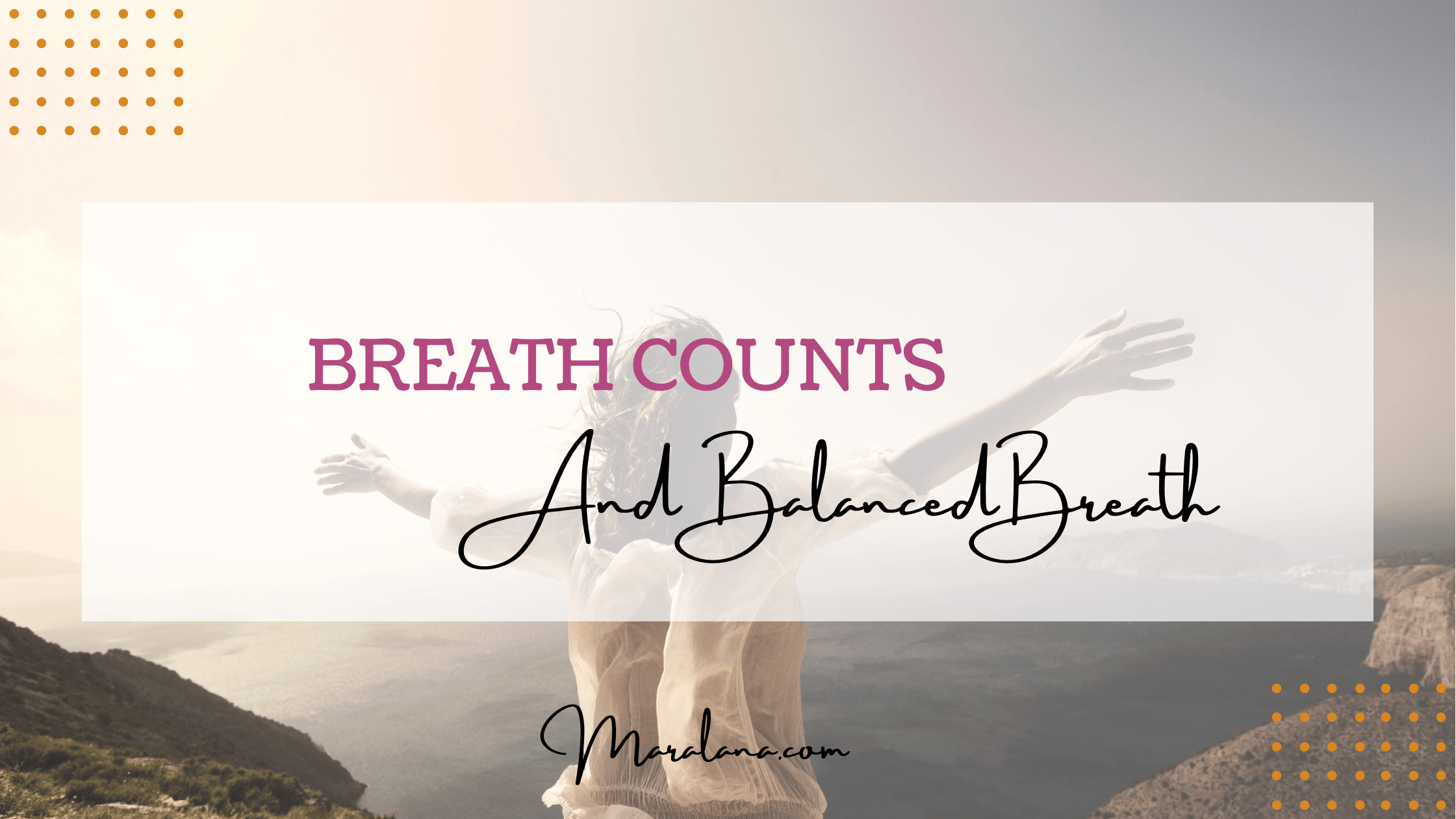The main parts of breathing are broken down simply into inhale and exhale. These opposing energies actually correspond with the balance between active and passive, energizing and calming, giving and receiving. Just one breath holds all the beautiful contrast of a sunrise and a sunset, of waves coming in and going out, of Summer and Winter. Keeping one of those picturesque scenes in mind, let’s learn about how we can manipulate the breath parts to achieve desired effects.

Sama Vritt, from Sanskrit (the ancient language of yoga), means balanced or equal movement breath. Therefore, (as you may have guessed), the length of the inhale should match length of the exhale. You can practice this breath simply by counting your next inhale and counting to that same number on your next exhale. For example, inhaling for a count of three and then exhaling for a count of three. You may also tap or count beats instead of using actual numbers if that feels better to you.
Using balanced breathing automatically focuses the mind and therefore helps us achieve a calm disposition. This technique can be done in almost any setting. It is simple and discreet, and helps to incorporate mindfulness into daily life.
Mindfulness is the quality or state of being conscious or aware of something. It is used in modern health and wellness systems and even in settings like public schools, as a therapeutic technique to help one acknowledge thoughts, feelings and bodily sensations, which is also the first step toward effectively changing them.

So balance is a great achievement in itself, but this exercise can even be adapted for the purpose of calming or energizing the body. When we breathe out longer than we breathe in, we’re able to eliminate more carbon dioxide from our system, therefore achieving a detoxifying effect. On the other hand, deep, strong inhales, followed by shorter, quick exhales help to energize the body and mind (see Breath of Fire in a later article).
Remember, it’s said that anything done with a clear intention helps to improve efficacy. Therefore, if it’s stress relief you seek, try several rounds of balanced breathing, all the while thinking to yourself; “I am present. I am calm. I am at ease.”
The Balanced Breath
Another breathing technique used for balancing the negative effects of stress is alternate-nostril breathing, also known as Nadi-Shodhana from yoga philosophy. This technique is practiced by alternating the flow of air from the left nostril over to the right and visa versa. The theme of balance comes in here as well because the right nostril is directly correlated to the left, sun or masculine energy of the brain. The left nostril, however, corresponds to the right, moon or feminine energies of the brain.

Therefore, not only does counting the breath to measures of equal movement optimize stress-relief and mindfulness; but so does using neural pathways to connect left and right hemispheres of the brain. When the breath travels in through the left nostril, it moves along ida nadi (moon channel) and transitions outward through pingala nadi (sun channel). When these channels are clear, energy is balanced and able to move clearly through the central channel, sushunma nadi.
Here’s how to do Nadi Shodhana balanced breathing:
- Take a few deep diaphragmatic breaths.
- Seated tall or lying down, ground your hands and feet and elongate your spine.
- Begin to envision the space at the end of your spine, below your tailbone at the starting point for your next inhale. Follow from here, lengthen the breath up to the crown of the head.
- As you transition to exhale, turn the breath around to descend down the spine, finishing once again at the base. Do this for 5-10 rounds.
- Now, we’ll prepare to layer on movement in the “x-axis” as well as the “y”. The breath will begin to sway like a bell curve up from the left side of the body to the top and back down the right, only to go back and forth again and again.
- Begin to envision the outer part of the left arm or fingers. From here, trace your mind up the left elbow to the shoulder, neck, ear and eventually to the top of the head. Pause briefly here in the space right above the crown of the head.
- Now as you begin to exhale, imagine your awareness traveling down the right side of your body to the right arm or fingers, crossing the right ear, neck, shoulder and elbow.
- Pause briefly and reverse the movement of the mind; inhale up the right. Pause and exhale down the left. Continue as you are able for up to 5 minutes.
- If you begin to get dizzy at any time during this or any breathing practice, return to a natural breath. Also setting your inner focal point (dristi) down toward the low belly can be helpful to ground unsettled or fast rising energy, as in dizziness.
- Return to a natural breath and focus on the effects of this practice. What has shifted?

Another interesting way to track your breathing and identify balance is by noticing which nostril seems more open throughout the day. For example, you may close the right nostril to test out how clear the left side is. Air may be moving with ease or stuck a little, like when you have a stuffy nose. You can then do the same, closing off the left nostril and taking a breath through just the right side. Is it more clear or less clear than the left side?
An open airflow on the left side, indicates a calm, relaxed state of mind (good to have just before bed). Whereas, a clear, free-flowing right nostril represents a more active state of mind (great for active duty mind, eg: taking a test). You may manipulate the function of the brain by using this breathing technique to purposefully encourage one side to be more open. To do this, breathe through only the ____ (left for calming; right for energizing) side and out the other for 10-20 repetitions. Great job!

